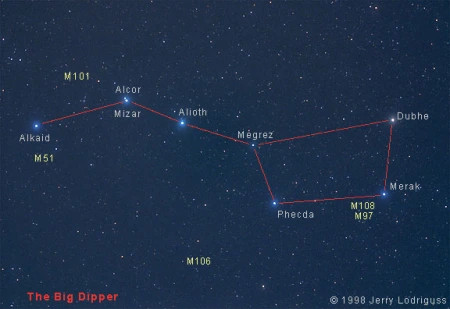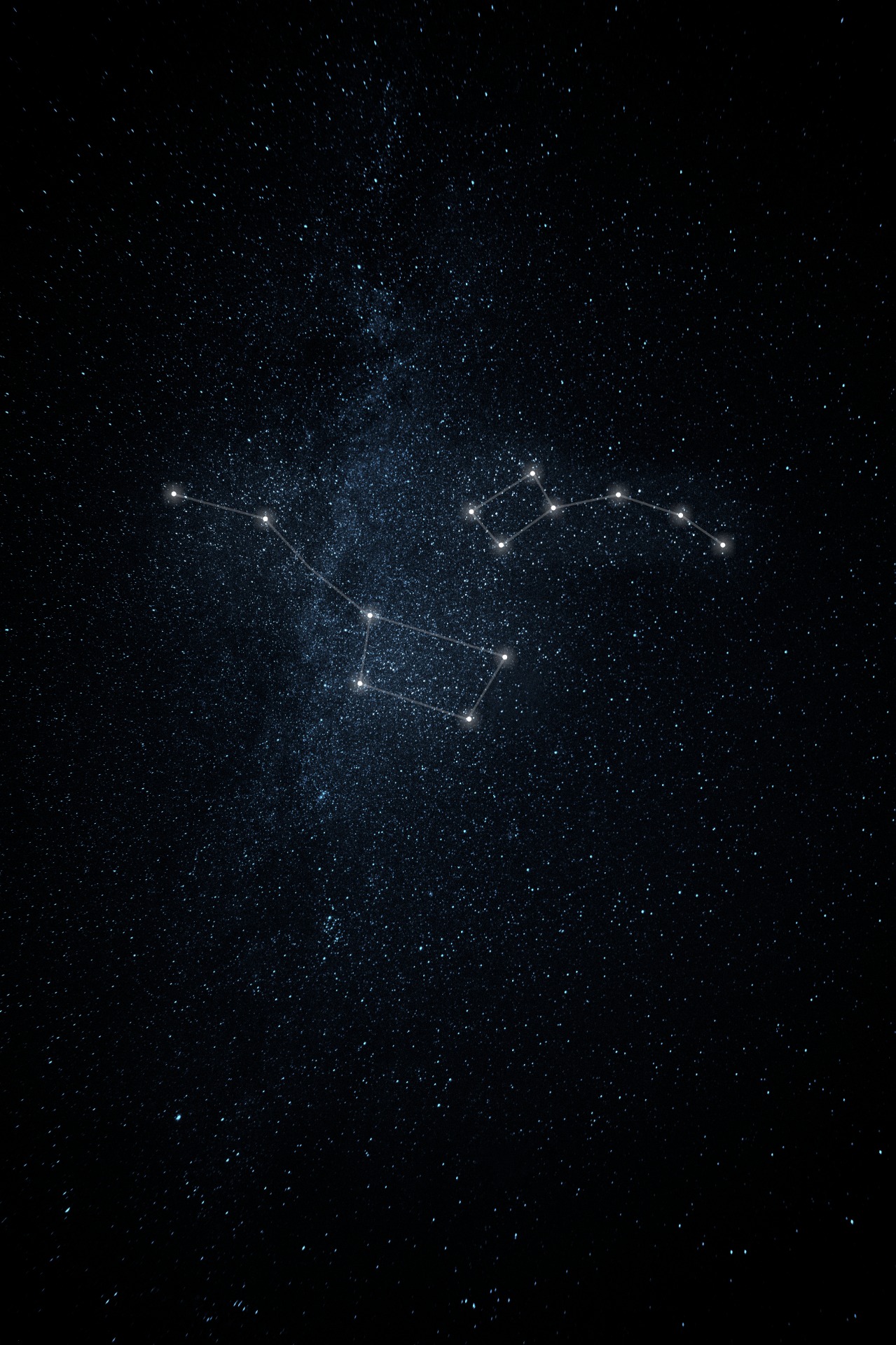The Big Dipper

Introduction
- The Big Dipper is one of the most recognizable asterisms (star patterns) in the sky.
- It is part of the larger Ursa Major constellation, often referred to as the "Great Bear."
- The Big Dipper is visible throughout the year in the Northern Hemisphere and is particularly prominent during spring and summer.
Shape and Structure
- The Big Dipper consists of seven bright stars arranged in the shape of a dipper or ladle, with a distinctive "bowl" and "handle."
- The bowl is formed by four stars: Dubhe, Merak, Phecda, and Megrez.
- The handle is made up of three stars: Alioth, Mizar, and Alkaid.
Navigational Importance
- The Big Dipper is an important navigational tool, particularly because its two "pointer" stars (Dubhe and Merak) point toward the North Star (Polaris). This helps people find true north in the night sky.
Astronomical Significance
- Mizar, one of the stars in the Big Dipper's handle, is famous for being a double star system. It has a companion star, Alcor, visible to the naked eye under good conditions.
- The Big Dipper also marks the location of several interesting deep-sky objects, such as galaxies and star clusters, visible with telescopes.
Cultural Importance
- The Big Dipper has been used in many cultures as a symbol of guidance and direction.
- In Native American traditions, it is often depicted as a bear and its hunters.
- In ancient Greek mythology, the Big Dipper was associated with the story of Callisto, a nymph turned into a bear.
Conclusion
- The Big Dipper is not just a beautiful and familiar star pattern but also an important cultural and navigational symbol.
- Its position and bright stars make it one of the first and easiest patterns to recognize in the northern sky.
